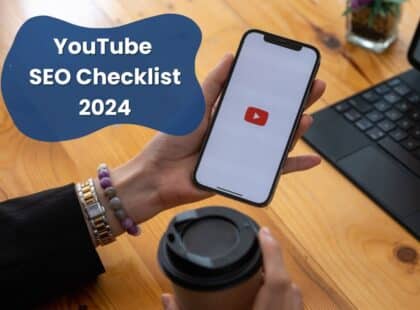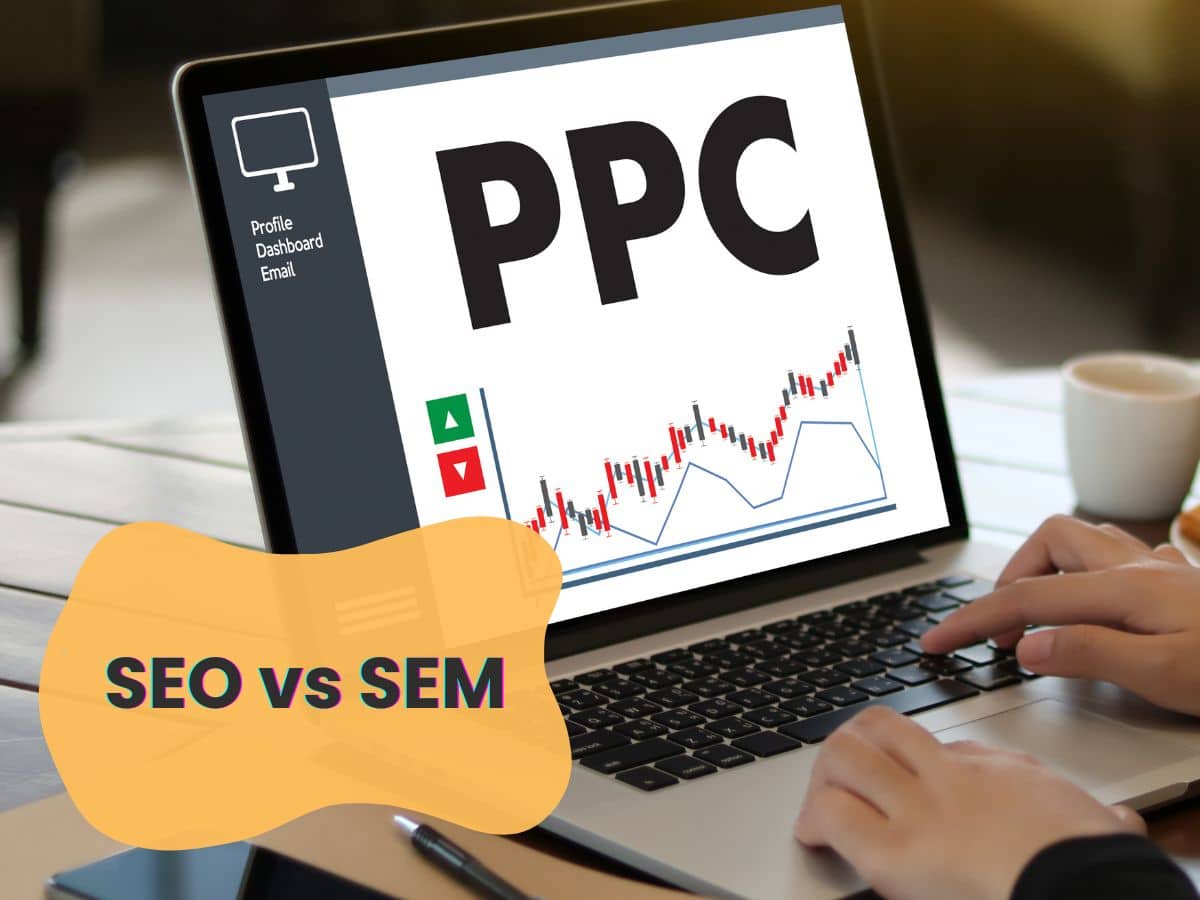
What Is YouTube SEO? 2024 YouTube SEO Checklist
In today’s fast-paced digital world, video content has become a crucial me [...]

In today’s digital landscape, understanding the difference between Search Engine Optimization (SEO) and Search Engine Marketing (SEM) is crucial for entrepreneurs, small businesses, and startups. Both strategies aim to increase visibility in search engines, but they utilize different methods and have unique advantages and disadvantages. This article provides an in-depth look at SEO vs SEM, helping you determine which approach is best suited for your business.
Table of Contents
The process of improving a website to raise its position in natural search results is known as search engine optimization or SEO. The primary objective of SEO is to increase the quantity and quality of traffic to your website from search engines. Key components of SEO include:
A study from Webbiquity reveals that 53% of all website traffic comes from organic search.
This statistic emphasizes the importance of SEO in driving valuable traffic to your site.
Search Engine Marketing (SEM), also known as paid search marketing encompasses a broader strategy that includes various forms of paid advertising on search engines. SEM aims to increase visibility and drive traffic through paid means. Key components of SEM include:
According to First Page Sage, businesses can expect an average return of $2 for every $1 spent on PPC advertising.
This highlights the potential effectiveness of SEM when strategically implemented.
Understanding the differences between SEO and SEM is essential for making informed marketing decisions. Here are the primary distinctions:
| Criteria | SEO | SEM |
| Cost | Generally lower long-term costs | Higher initial costs (pay-per-click) |
| Time to See Results | Takes time to build authority and rank | Immediate results with paid ads |
| Traffic Source | Organic search traffic | Paid search traffic |
| Longevity | Long-term benefits | Short-term visibility |
| Trust Level | Higher trust from users | Lower trust as ads are paid |
| ROI | Longer time to achieve ROI, but more sustainable | Faster ROI but dependent on ad spend |
| Testing | Limited testing without direct ad spend | Allows for easier and faster testing with paid ads |
SEO has its advantages that make it a popular strategy among businesses. Including:
On the other hand, SEM offers its own set of benefits. SEM pros are:
However, SEM is not without its drawbacks including:
Choosing between SEO and SEM is largely dependent on your business objectives, budget, and time constraints. For instance, if you aim to build a strong online presence over time and have the patience to invest in content creation and optimization, SEO is likely the better choice. Conversely, if you need immediate visibility for a new product launch or a promotional campaign, SEM would be more suitable.
For entrepreneurs and small businesses looking to enhance their online visibility, a combined approach utilizing both SEO and SEM can yield significant results. Integrating SEO strategies for long-term growth with SEM tactics for immediate visibility allows businesses to maximize their reach.
According to recent data from FirstPageSage, SEO offers an impressive 748% ROI over three years, while SEM delivers a 36% ROI. Additionally, SEO has an average conversion rate of 2.4%, compared to 1.3% for SEM, underscoring the power of SEO in driving sustainable, high-quality traffic. This combination ensures that while SEM brings quick results, SEO continues to provide lasting benefits.
In conclusion, understanding the differences between SEO and SEM is vital for any entrepreneur or business owner aiming to improve their online presence. Each strategy has its strengths and weaknesses, and the optimal approach depends on your specific business needs and goals.
Reach out to Marketing Spotlight for a free consultation to see if SEO is the right channel for you and get an SEO strategy.
By analyzing your objectives and leveraging both SEO and SEM, you can enhance your visibility in the digital landscape and drive greater success for your business.

I’ve had a smooth experience working with Marketing Spotlight team. They helped me develop a website, create a marketing strategy and set up marketing automation.

Marketing Spotlight transformed our marketing efforts with their automation services. The seamless integration and efficiency they brought to our campaigns have been a game-changer. Our customer engagement in the UAE has never been better!
The meeting link will be shared with you via email after you finish booking a call.